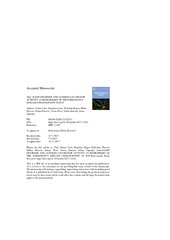Приказ основних података о документу
Sleep disorder and altered locomotor activity as biomarkers of the Parkinson's disease cholinopathy in rat
| dc.creator | Ćirić, Jelena | |
| dc.creator | Lazić, Katarina | |
| dc.creator | Kapor, Slobodan | |
| dc.creator | Perović, Milka | |
| dc.creator | Petrović, Jelena | |
| dc.creator | Pešić, Vesna | |
| dc.creator | Kanazir, Selma | |
| dc.creator | Šaponjić, Jasna | |
| dc.date.accessioned | 2019-06-14T13:02:50Z | |
| dc.date.available | 2019-06-14T13:02:50Z | |
| dc.date.available | 2019-05-21 | |
| dc.date.issued | 2018 | |
| dc.identifier.uri | http://linkinghub.elsevier.com/retrieve/pii/S0166432817312391 | |
| dc.identifier.uri | http://www.ncbi.nlm.nih.gov/pubmed/29170000 | |
| dc.identifier.uri | https://radar.ibiss.bg.ac.rs/handle/123456789/3361 | |
| dc.description.abstract | In order to find out the possible earliest biomarkers of Parkinson's disease (PD) cholinopathy, we followed the impact of bilateral pedunculopontine tegmental nucleus (PPT) lesion in rat on: the cortical and hippocampal sleep/wake states architectures, all sleep states related EEG microstructures, sleep spindles, the basal and stimulated locomotor activity. Sleep and basal locomotor activity in adult Wistar rats were followed during their inactive circadian phase, and throughout the same aging period. The bilateral PPT lesions were done by 0.1M ibotenic acid (IBO) during the surgical procedure for implantation of the electroencephalographic (EEG) and electromyographic (EMG) electrodes for chronic sleep recording. The cholinergic neuronal loss was identified by NADPH - diaphorase histochemistry. After all sleep and behavioral recording sessions, the locomotor activity was stimulated by d-amphetamine (d-AMPH) and the neuronal activity of striatum was followed by c-Fos immunolabeling. Impaired cholinergic innervation from the PPT was expressed earlier as sleep disorder then as movement disorder, and it was the earliest and long-lasting at hippocampal and thalamo-cortical level, and followed by a delayed "hypokinesia". This severe impact of a tonically impaired PPT cholinergic innervation was evidenced as the cholinergic interneuronal loss of the caudate putamen and as a suppressed c-Fos expression after stimulation by d-AMPH. In order how they occurred, the hippocampal non rapid eye movement (NREM) sleep disorder, altered high voltage sleep spindle (HVS) dynamics during rapid eye movement (REM) sleep in the hippocampus and motor cortex, and "hypokinesia" may serve as the biomarkers of PD cholinopathy onset and progression. | en |
| dc.relation | info:eu-repo/grantAgreement/MESTD/Basic Research (BR or ON)/173022/RS// | |
| dc.relation.isversionof | https://radar.ibiss.bg.ac.rs/handle/123456789/2932 | |
| dc.rights | embargoedAccess | |
| dc.rights.uri | https://creativecommons.org/licenses/by-nc-nd/4.0/ | |
| dc.source | Behavioural Brain Research | |
| dc.subject | High voltage sleep spindles | |
| dc.subject | Locomotor activity | |
| dc.subject | Parkinson’s disease | |
| dc.subject | Pedunculopontine tegmental nucleus | |
| dc.subject | Sleep | |
| dc.subject | c-Fos | |
| dc.title | Sleep disorder and altered locomotor activity as biomarkers of the Parkinson's disease cholinopathy in rat | en |
| dc.type | article | en |
| dc.rights.license | BY-NC-ND | |
| dcterms.abstract | Лазић, Катарина; Ћирић, Јелена; Капор, Слободан; Перовић, Милка; Петровић, Јелена; Пешић, Весна; Шапоњић, Јасна; Каназир, Селма; | |
| dc.rights.holder | © 2017 Elsevier B.V. | |
| dc.citation.volume | 339 | |
| dc.description.note | This is the peer reviewed version of the following article: Ciric J, Lazic K, Kapor S, Perovic M, Petrovic J, Pesic V, Kanazir S, Saponjic J. Sleep disorder and altered locomotor activity as biomarkers of the Parkinson’s disease cholinopathy in rat. Behav Brain Res. 2018;339:79-92. [http://dx.doi.org/10.1016/j.bbr.2017.11.021]. | |
| dc.identifier.doi | 10.1016/j.bbr.2017.11.021 | |
| dc.identifier.pmid | 29170000 | |
| dc.identifier.scopus | 2-s2.0-85034764500 | |
| dc.identifier.wos | 000424173300010 | |
| dc.citation.spage | 79 | |
| dc.citation.epage | 92 | |
| dc.type.version | acceptedVersion | |
| dc.identifier.fulltext | https://radar.ibiss.bg.ac.rs/bitstream/id/5062/BeBrainRes_2017.pdf |

